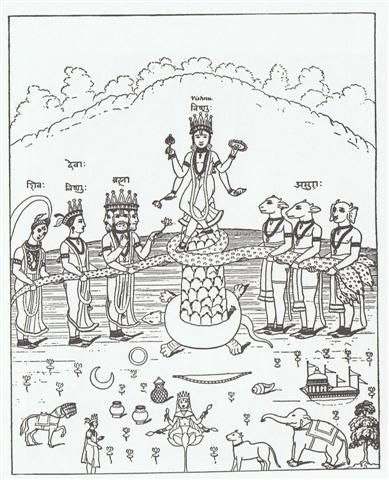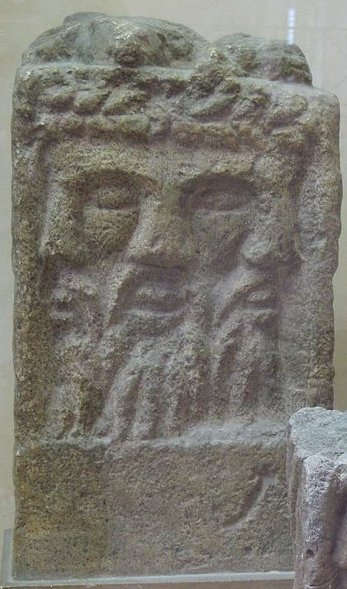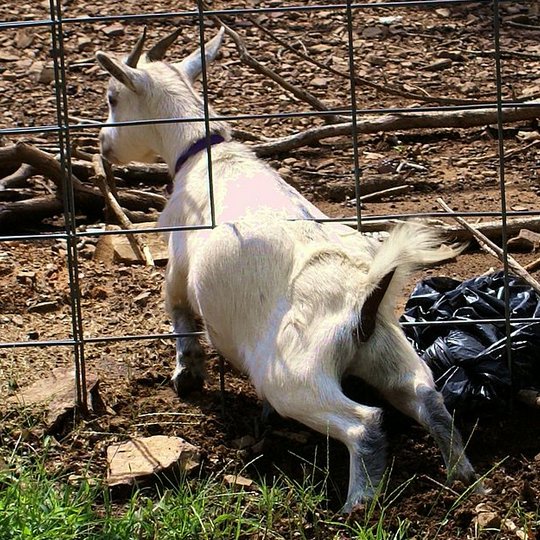Bb8.9
Obviously there was (had been, will always be) a tug-of-war. We can imagine a triplet
of godlike beasts ('goats') drawing in one direction (towards the
east, the direction of birth) and on the other
side of the Earth Turtle (Pawahtun)
a human-like triplet drawing in the opposite
direction (towards death in the west):
91 right
ascension days later was the Foundation Stone:
|
 |
*91
|
 |
|
Bb1-17
(421 + 17 = 438) |
Bb3-31
(530) |
|
DENEB ALGIEDI (*330) |
ALCYONE (*421) |
|
Eastern One in the Tail of the Goat |
Foundation Stone |
|
February 13 (410)
|
May 16 (136 = 501) |
And the Gate of the Goat was 19 right ascension days
after Alcyone:
|
 |
*91
|
 |
*19 |
 |
|
Bb1-17
(421 + 17 = 438) |
Bb3-31
(530) |
Bb4-8 (421 + 128) |
|
DENEB ALGIEDI (*330) |
ALCYONE (*421) |
HAEDUS II (*75) |
|
Eastern One in the Tail of the Goat |
Foundation Stone |
Gate of the Goat |
|
February 13 (410 = 438 - 28)
|
May 16 (136 = 501 = 530 - 29) |
June 4
(520 = 549 - 29) |
310 - 128 = 182 days later (in December 3) the Full Moon
could be observed close to the right ascension line
of
Haedus II:
 |
 |
 |
 |
 |
 |
 |
|
Bb8-26 (310) |
Bb8-27 (366 * 2) |
Bb8-28 (733) |
Bb8-29 |
Bb8-30 (314) |
Bb8-31 |
Bb8-32 |
|
kua ka ko te Raa |
i vai te taketake |
ku kotia ko te henua |
kua haaati
hia ko te kava |
kava vere ki te henua |
kua haaati
hia ko te kava
- ma te hatu huri |
eko te henua |
|
Take.
The Marquesans are the only people who
own to a distinctive national name, and
retain a tradition of the road they
travelled from their original habitat, until
they arrived at the Marquesan Islands. They
call themselves te Take, 'the
Take nation'. Fornander. Take,
Tuvaluan for the Black Noddy (Anous
Minutes). The specific epithet
taketake is Māori for long established,
ancient, or original. In the Rapa Nui
mythology, the deity Make-make was
the chief god of the birdman cult, the other
three gods associated with it being
Hawa-tuu-take-take (the Chief of the
eggs) his wife Vie Hoa and Vie
Kanatea. Wikipedia. |
|
Dec 3 (310 + 27) |
4 |
5 |
6 |
7 (341) |
8 (364 - 22) |
9 |
|
RIGHT
ASCENSION DAYS AT THE FULL MOON: |
|
HAEDUS II = η Aurigae
(75.9) |
5h (*76.1)
ε
Leporis (76.0),
CURSA (Footstool) = β Eridani (76.4),
λ Eridani (76.7)
*35.0 = *76.4 - *41.4 |
μ Aurigae, μ Leporis (77.6) |
ĸ Leporis (78.0),
RIGEL (Foot) =
β
Orionis
(78.1),
Flaming Star = IC405
(78.2),
CAPELLA = α Aurigae (78.4),
ο
Columbae,
τ
Orionis (78.8)
*37.0 = *78.4 - *41.4
THUBAN (α Draconis) |
λ Aurigae (79.0), λ Leporis (79.6), ρ
Aurigae (79.7)
ARCTURUS (α Bootis) |
Shur-narkabti-sha-iltanu-5 (Star in the Bull
towards the north)
σ
Aurigae (80.4), BELLATRIX (Female Warrior) =
γ
Orionis, SAIF AL JABBAR (Sword of the Giant)
=
η
Orionis
(80.7),
ELNATH (The Butting One) =
β
Tauri =
γ
Aurigae
(80.9)
*39.0 = *80.4 - *41.4 |
ψ
Orionis (81.1),
NIHAL (Thirst-slaking Camels) =
β
Leporis
(81.7) |
 |
|
June 4 (155) |
5 |
6 |
7 (157
+ 1) |
8 (181
- 22) |
9
(160) |
10 / 6 |
|
'May 8
(128) |
9 |
10 |
11 (131) |
12 |
13 |
14 |
|
"April
24 (114) |
25 |
26 |
27 |
28 |
29 |
30 |
|
APRIL
1 (91) |
2 |
3 |
4 |
5 |
6 |
7 |
The beginning of line Bb8 was therefore in day 337
(December 3) - 25 = 312 (November 8), when the
nakshatra Full
Moon could be observed at the place half a year way
from Algenib Persei:
 |
 |
 |
 |
 |
|
Bb8-1 (285) |
Bb8-2 |
Bb8-3 |
Bb8-4 |
Bb8-5 |
|
Kua hua ia |
ki to inoino -
e to huki e |
hakaturou
ki ruga nei |
e tagata - mau
maro |
mai tae tuu
mai ki te pa - maro |
|
Hua. 1.
Testicle. 2. Figuratively: son,
hua tahi, only son; fruits of
the earth; to grow well (of fruits).
3. To cause a fight, a quarrel.
Hua-ai, generation, as
lineage of direct descendents;
contemporaries. Huahua,
coccyx of bird, 'parson's
nose': huahua moa, huahua
uha. Huataru, a
creeper (Chenopodium
ambiguum). Vanaga. 1. The same;
ki hua, again, to continue,
to strain, to struggle, to move, to
repeat, over and above. Mq.: hua,
the same, to return, to recommence.
2. To bloom, to sprout; flower,
fruit (huaa); huaa
tae oko, huaa vahio, young
fruit; hua atahi, only son;
huahaga, fruit; mei te
huahaga o tokoe kopu, the fruit
of thy body; tikea huahaga,
deceptive appearance. P Pau.: ua,
to be born; huahaga, lineage.
Mgv.: hua, to produce (said
of trees, grain, etc.), blooming
time of flowers, abundance of fruit.
Mq.: hua, to produce, to bear
fruit. Ta.: ua, to sprout.
Huahua. 1. Tailless fowl. 2.
Vein, tendon, line. 3. Mgv.:
huahua, pimples covering the
face. Ta.: huahua, id. Mq.:
hua, tubercules. Sa.:
fuafua, abscess on hand or feet.
Ma.: huahua, small pimples.
Pau.: Hua-gakau, rupture.
Ta.: áau, entrails. Sa.:
ga'au, id. Ma.: ngakau,
id. Churchill. 1. Fruit. 2. Egg. 3.
Tā
hua = 'genealogical writing' or
'same writing'. Fischer.
Ruga.
Upper part, higher part;
when used as a locative adverb, it
is preceded by a preposition: i
ruga, above, on; ki ruga,
upwards, mai ruga, from
above. When used with a noun the
same preposition is repeated:
he-ea te vî'e Vakai, he-iri ki ruga
ki te Ahu ruga, the woman Vakai
went, she climbed Ahu Runga. Ruga
nui, high, elevated, lofty:
kona ruga nui, high place,
elevated position, high office;
mana'u ruga nui, elevated
thoughts. Vanaga. High up; a ruga,
above; ki ruga, on, above,
upon; ma ruga, above; o
ruga, upper; kahu o ruga,
royal (sail); ruga iho,
celestial. Hakaruga, to
accumulate, to draw up. P Pau.,
Mgv.: ruga, above. Mq.:
úna, úka, id. Ta.: nua,
nia, id. Churchill.
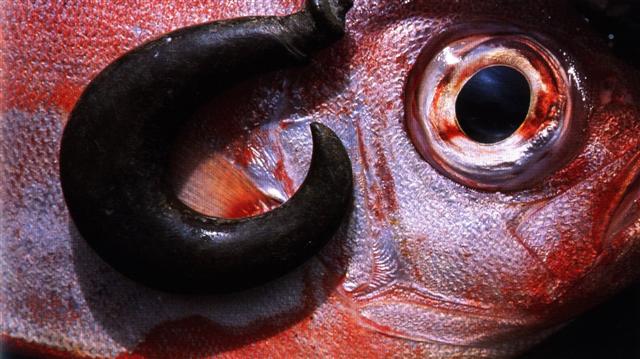
... The
first half beginning with Alef
- an ox, and ending with Lamed
- a whip. The second list begins
with Mem - water, and
continues with Nun - fish,
Samek - fish bones, Ayin
- a water spring, Peh - the
mouth of a well, Tsadi - to
fish, Kof, Resh and
Shin are the hook hole, hook
head and hook teeth, known to exist
from prehistoric times, and the
Tav is the mark used to count
the fish caught ...
 |
|
RIGHT
ASCENSION DAYS AT THE FULL MOON: |
|
May 10 (146 - 16) |
11 |
12 (148 - 16) |
13 (133) |
14 (150 - 16) |
|
ALGENIB PERSEI = α Persei (50.0),
ο Tauri (50.2), ξ Tauri (50.8)
GIENAH (γ Corvi) |
σ Persei (51.6) |
No star listed (52) |
ψ
Persei (53.1)
ACRUX (α
CRUCIS) |
δ
Persei (54.7) |
|
HELIACAL STARS: |
|
Nov 8 (337 - 25) |
9 |
10 (314 → π) |
11 |
12 |
|
ο
Cor. Borealis (232.0),
δ
Lupi (232.1),
φ¹,
ν²
Lupi (232.2),
ν¹
Lupi (232.3),
ε
Lupi (232.4),
φ²
Lupi (232.5),
PHERKAD (The Dim One of the Two
Calves) =
γ
Ursae Min.
(232.6),
ε
Librae (232.7),
η
Cor. Borealis (232.8),
υ
Lupi (232.9)
*191.0 = *232.4 - 41.4 |
ALKALUROPS (The Herdsman's Lance) =
μ
Bootis
(233.1),
ED ASICH (Male Hyena) =
ι
Draconis
(233.2) |
NUSAKAN (Pauper's Bowl) = β Cor.
Bor.
(234.0), κ¹ Apodis (234.3), ν Bootis
(234.7), ζ Librae (234.9 |
θ Cor. Borealis (235.3), γ Lupi
(235.6),
GEMMA = α Cor. Bor.,
ZUBEN ELAKRAB = γ Librae, QIN = δ
Serpentis, ε Tr. Austr.
(235.7), μ Cor. Borealis (235.8), υ
Librae (235.9)
SIRRAH (α Andromedae) |
φ Bootis (236.2), ω Lupi, τ Librae
(236.3), ψ¹ Lupi (236.7), ζ Cor.
Borealis (236.9) |
|
... In other words, the ancient
Druidic religion based on the
oak-cult will be swept away by
Christianity and the door - the god
Llyr - will languish forgotten in
the Castle of Arianrhod, the
Corona Borealis. This helps us
to understand the relationship at
Rome of Janus and the White Goddess
Cardea who is ... the Goddess of
Hinges who came to Rome from Alba
Longa. She was the hinge on which
the year swung - the ancient Latin,
not the Etruscan year - and her
importance as such is recorded in
the Latin adjective cardinalis
- as we say in English 'of cardinal
importance - which was also applied
to the four main winds; for winds
were considered as under the sole
direction of the Great Goddess until
Classical times ...
 |
It could alternatively be stated that line
Bb8 was beginning when the Full Moon reached
the night when the Wing of the Raven (Gienah)
culminated (at 21h).
The fish-hook in Bb8-3 might have referred
to Water:
... another Alcyone,
daughter of Pleione, 'Queen of Sailing', by
the oak-hero Atlas, was the mystical leader
of the seven Pleiads. The heliacal rising of
the Pleiads in May marked the beginning of
the navigational year; their setting marked
its end when (as Pliny notices in a passage
about the halcyon) a remarkably cold North
wind blows ...
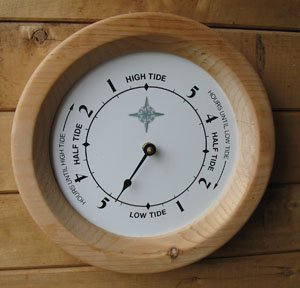
The tidal cycle of the Moon was not the same as the
diurnal cycle of the Sun, but both illustrated the
fundamental tug-of-war.

... He was moreover
confronted with identifications which no
European, that is, no average rational
European, could admit. He felt himself
humiliated, though not disagreeably so, at
finding that his informant regarded fire and
water as complementary, and not as
opposites. The rays of light and heat draw
the water up, and also cause it to descend
again in the form of rain. That is all to
the good. The movement created by this
coming and going is a good thing. By means
of the rays the Nummo draws out, and gives
back the life-force. This movement indeed
makes life. The old man realized that he was
now at a critical point. If the Nazarene did
not understand this business of coming and
going, he would not understand anything
else. He wanted to say that what made life
was not so much force as the movement of
forces. He reverted to the idea of a
universal shuttle service. 'The rays drink
up the little waters of the earth, the
shallow pools, making them rise, and then
descend again in rain.' Then, leaving aside
the question of water, he summed up his
argument: 'To draw up and then return what
one had drawn - that is the life of the
world' ...

 |
 |
 |
 |
 |
 |
|
Bb8-6 (290) |
Bb8-7 |
Bb8-8 |
Bb8-9 (285 + 8) |
Bb8-10 |
Bb8-11 (295) |
|
o
te
ariki |
kua
vere ko te
kava |
kua
haati ia ko te kava |
e
mauga - rere ragi - maitai
hura
hia |
kua
huki - ko te henua |
ku
hanau ko te ariki |
|
Hanau.
1. Race, ethnic group.
Hanau eepe, the
thick-set race; hanau
momoko, the slender race
(these terms were
mistranslated as 'long-ears'
and 'short-ears'). 2. To be
born. Hanau tama,
pregnant woman; vî'e
hanau poki, midwive
(also: vî'e hakaa'u).
Vanaga. To be born;
vie hanau, midwife. P
Pau.: fanauga, child,
descendant, progeny. Mgv.:
hanau, to be born, to
be brought into the world.
Mq.: fanau, hanau,
to be born, to lie in, to
bring into the world. Ta.:
fanau, to be born, to
lie in. Churchill. |
|
RIGHT
ASCENSION DAYS AT THE FULL MOON: |
|
May 15 |
16 (136) |
17 |
18 |
19 |
20 (140) |
|
Al
Thurayya-27 (Many Little
Ones) /
Krittikā-3 (Nurses of
Kārttikeya) /
TAU-ONO (Six Stones)
ATIKS =
ο
Persei, RANA (Frog) =
δ
Eridani
(55.1),
CELAENO (16 Tauri), ELECTRA
(17), TAYGETA (19),
ν
Persei (55.3), MAIA (20),
ASTEROPE (21), MEROPE (23)
(55.6) |
Hairy Head-18 (Cockerel)
/
Temennu-3 (Foundation Stone)
ALCYONE
(56.1),
PLEIONE (28 Tauri), ATLAS
(27 Tauri)
(56.3) |
MENKHIB (Next to the
Pleiades =
ζ
Persei
(57.6)
PORRIMA (γ Virginis) |
ZAURAK (Boat) = γ Eridani
(58.9) |
λ Tauri (59.3), ν Tauri
(59.9) |
4h (60.9)
JĪSHUĬ = λ Persei
(60.7)
COR CAROLI (α Canum Ven.) |
|
HELIACAL STARS: |
|
Nov 13 |
14 (318) |
15 |
16 |
17 |
18 (322) |
|
κ
Librae (237.2),
ι
Serpentis (237.4),
ψ²
Lupi,
ρ
Oct.
(237.5), γ Cor. Borealis, η
Librae (237.7), COR
SERPENTIS = α Serpentis
(237.9)
*196.0 = *237.4 - *41.4 |
π
Cor. Borealis,
UNUK ELHAIA (Necks of the
Serpents) = λ Serpentis
(238.1),
CHOW =
β
Serpentis
(238.6) |
κ
Serpentis (239.3),
δ
Cor. Borealis,
TIĀNRŪ =
μ
Serpentis
(239.5),
χ
Lupi, (239.6),
ω
Serpentis (239.7),
BA (= Pa) =
ε
Serpentis,
χ
Herculis (239.8).
κ
Cor.
Borealis, ρ Serpentis
(239.9) |
λ
Librae (240.0),
β
Tr. Austr. (240.3),
κ
Tr. Austr. (240.4),
ρ
Scorpii (240.8)
*199.0 = *240.4 - *41.4 |
Iklīl al Jabhah-15 (Crown of
the Forehead) /
Anuradha-17 (Following
Rādhā) /
Room-4 (Hare)
ξ
Lupi,
λ Cor.
Bor.(241.1),
ZHENG =
γ
Serpentis,
θ
Librae (241.2),
VRISCHIKA =
π
Scorpii
(241.3),
ε
Cor.
Borealis (241.5),
DSCHUBBA
(Front of Forehead) = δ
Scorpii
(241.7), η Lupi (241.9) |
υ
Herculis (242.3),
ρ
Cor. Borealis (242.4),
ι
Cor. Borealis (242.5),
θ
Draconis (242.6),
ξ
Scorpii (242.7)
SCHEDIR (Breast) α
Cassiopeiae
*201.0 = *242.4 - *41.4 |
|
... The
correspondence between the
winter solstice and the
kali'i rite of the
Makahiki is arrived at
as follows: ideally, the
second ceremony of 'breaking
the coconut', when the
priests assemble at the
temple to spot the rising of
the Pleiades, coincides with
the full moon (Hua
tapu) of the twelfth
lunar month (Welehu). In
the latter eighteenth
century, the Pleiades appear
at sunset on 18 November.
Ten days later (28
November), the Lono
effigy sets off on its
circuit, which lasts
twenty-three days, thus
bringing the god back for
the climactic battle with
the king on 21 December, the
solstice (= Hawaiian 16
Makali'i). The
correspondence is 'ideal'
and only rarely achieved,
since it depends on the
coincidence of the full moon
and the crepuscular rising
of the Pleiades ... |
November 18 (322) ought to be the result
from counting 16 nights ahead
(corresponding to the minimum distance
before a star rising with the Sun would return to
visibility late at night) together with the precession since the
era of the Golden Bull (64 days). I.e.
*242 (when the Breast culminated at 21h)
- *16 - *64
→ 242 (AUGUST 30).
Anciently they waited for the return to
visiblity of the relevant stars. In this
case we should therefore find that the
Breast of Cassiopeia had been pushed
ahead with around 80 days since the time
of the Bull:
|
 |
80 |
 |
|
Bb6-11
(214) |
Bb8-11 (295) |
|
MATAR (*344) |
Nov
18 (*242) |
|
*344 + 80 - 214 = 210.
*242 + 80 - 295 = 27 = 210 -
183. |
 |
 |
 |
 |
 |
 |
|
Bb8-12 (296) |
Bb8-13 |
Bb8-14 |
Bb8-15 |
Bb8-16 |
Bb8-17 |
|
e tagata rere
- ki to ragi |
e tagata hura
ia - ki te henua |
kua hura koia
- ki te ika |
e tagata hura
ia - ki te henua |
koia i huki -
ki te tuiga o te ika - o te haga ki
te kai |
kua haga te
kai i te maro |
|
Hura. 1. To
fish with a small funnel-shaped net
tied to the end of a pole. This
fishing is done from the shore;
fishing with the same net, but
swimming, is called tukutuku.
2. To be active, to
get moving when working: ka hura, ka aga! come on, get moving! to
work! 3. Tagata gutu hura, a
flatterer, a flirt, a
funny person, a witty person. Hurahura, to dance, to
swing. Vanaga. 1. Sling. In his brilliant study of the distribution of
the sling in the Pacific tracts,
Captain Friederici makes this note
(Beiträge zur Völker- und
Sprachenkunde von Deutsch-Neuguinea,
page 115b): 'Such, though somewhat
modified, is the case in Rapanui,
Easter Island. The testimony of all
the reporters who have had dealings
with these people is unanimous that
stones of two to three pounds
weight, frequently sharp chunks of
obsidian, were thrown by the hand;
no one mentions the use of slings.
Yet Roussel includes this weapon in
his vocabulary and calls it hura.
In my opinion this word can be
derived only from the Mangareva verb
kohura, to throw a stone or a
lance. So far as we know Rapanui
has received its population in part
by way of Mangareva.' To this note
should be added the citation of
kirikiri ueue as
exhibiting this particular use of
ueue in which the general sense
is the transitive shake. 2. Fife,
whistle, drum, trumpet, to play;
hurahura, whistle. P Mq.:
hurahura, dance, divertissement,
to skip. Ta.: hura, to leap
for joy. Pau.: hura-viru,
well disposed. Churchill. H. Hula,
a swelling, a protuberance under the
arm or on the thigh. Churchill 2. |
|
HELIACAL STARS: |
|
Nov 19 |
20 (324) |
21 |
22 |
23 |
24 |
|
16h (243.5)
ACRAB (Scorpion) = β Scorpii,
JABHAT AL ACRAB (Forehead of the
Scorpion) = ω Scorpii
(243.3), θ Lupi,
RUTILICUS = β Herculis
(243.5),
MARFIK (Elbow) = κ Herculis
(243.7), φ Herculis (243.8) |
ψ
Scorpii (244.6),
LESATH (Sting) =
ν
Scorpii
(244.8) |
χ
Scorpii (245.1),
YED PRIOR (Hand in Front) =
δ
Ophiuchi,
δ
Tr.
Austr. (245.5) |
YED POSTERIOR (Hand Behind) =
ε
Ophiuchi,
RUKBALGETHI SHEMALI (Northern Knee
of the Giant) =
τ
Herculis
(246.6).
δ
Apodis (246.7),
ο
Scorpii (246.8) |
Heart-5
(Fox)
σ
Scorpii
(247.0),
HEJIAN =
γ
Herculis
(247.2),
ψ
Ophiuchi (247.7) |
ρ
Ophiuchi (248.1),
KAJAM (Club) =
ω
Herculis
(248.3),
χ
Ophiuchi (248.5),
SHE LOW (Market Tower) =
υ
Ophiuchi,
Tr.
Austr. (248.7), ζ Tr. Austr. (248.8) |
|
RIGHT ASCENSION DAYS AT THE FULL
MOON: |
|
υ Persei (61.2) |
BEID (Egg) =
ο¹
Eridani
(62.2),
μ
Persei (62.8)
VINDEMIATRIX ( ε Virginis) |
Al
Dabarān-2 (The Follower)
HYADUM I =
γ
Tauri (63.4)
*22.0 = *63.4 - *41.4 |
HYADUM II = δ¹ Tauri
(64.2) |
Net-19 (Crow)
AIN (Eye) =
ε
Tauri,
θ¹
Tauri,
θ²
Tauri (65.7) |
No star listed (66) |
|
May 21 (141) |
22 |
23 |
24 |
25
(118 + 27) |
26 |
|
'April 24 |
25 |
26 |
27 |
28 (118 = 4 * 29½) |
29 |
|
"April 10 (100) |
11 |
12 |
13 |
14 (104) |
15 |
|
MARCH 18 |
19 (142 - 64 = 78) |
20 |
21 (0h) |
22 (81) |
23 |
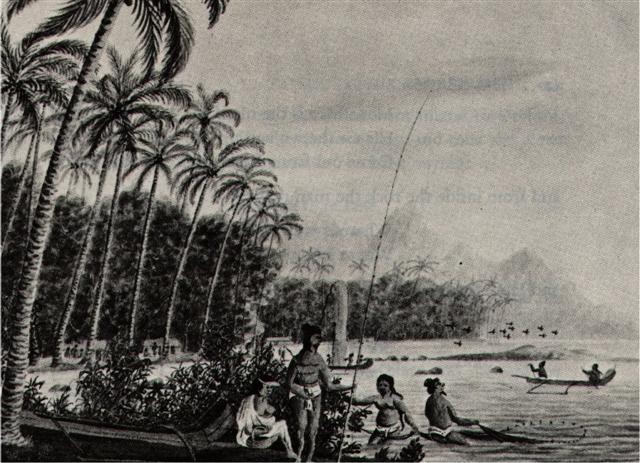 |
 |
 |
 |
 |
|
Bb8-18 (296 + 6) |
Bb8-19 |
Bb8-20 |
Bb8-21 (305) |
|
ku hou
ua |
ma te
hoko - kua pu te ariki |
i mua
kia ia - mai tae puhi i te ahi |
kua oho
te rima ki te henua |
|
Hou.1. To
perforate, to drill. P Pau.:
fakahou, to furrow, to
groove, to plow. Mgv.: hou,
ouou, a drill, a wimble,
a borer, a gimlet, to pierce
with a drill. Mq.: hou,
an auger, a drill, a wimble,
corkscrew, to pierce with a
drill. Ta.: hou, auger,
to drill. 2. New, fresh, modern,
recent, young, youth; rae ki
te mea hou, to innovate;
hou anei, modern. Hakahou,
to reiterate, reparation, to
restore, to recapitulate;
haga hakahou, to make over,
to renew, recovery; avai
hakahou, a loan, to borrow;
rere hakahou mai, to
rebound; hakahou iho, to
recommence. P Pau.: hou,
young, new. Mgv.: hou,
new; akahou, to renew.
Mq.: hou, new, recent,
fresh, young. Ta.: hou,
new, recent, before. Churchill.
Rima. 1.
Hand, also, but improperly,
fingers, forearm; te ko
mu'a o te rima, palm of
the hand; te ko tu'a o te
rima, back of the hand;
rima hakaturu,
generous, liberal,
munificent; tagata rima
pu'a, helper; rima
hakakau, generous hands,
open-handed person; rima
matu'a neanea, thumb. 2.
Fifth; e-rima, ka-rima,
five. Vanaga. 1. Five. P
Mgv., Ta.: rima, id.
Mq.: ima, id. 2. Arm,
hand; rima atakai,
obliging, kind, generous, a
gift, rima tuku,
elbow, rima omo,
infidelity, faithless,
unfaithful, rima o te
kahu, sleeve, kakari
rima, wrist. P Pau.:
rima, hand, arm. Mgv.:
rima, hand, arm, paw,
finger. Mq.: ima,
hand, arm. Ta.: rima,
arm, hand, finger.
Rimahakaviriviri, fist,
to clench the fist, a blow
of the fist. Rimahati,
one-armed. Rima ko
manaroa, little finger
T. Rimamatua neanea,
thumb. Rimaroaroa tahaga,
middle finger T.
Rimatitiri, to walk with
the hands behind the back.
Rimaruru, to clasp
hands. Rimatuhi henna
(?) index finger T.
Rimatuhi a hana, finger
ring T (? ring finger). 3.
To lead into error;
rimaetua, supernatural,
Mq.: imaima, that
which returns after a man's
death, Ta.: rimaatua,
plague, dissension, mortal
illness. Churchill.
|
 |
*84
|
 |
|
Bb6-17 (220) |
Bb8-20 (304) |
|
11h (*167)
|
ζ Ophiuchi (*251) |
|
|
HELIACAL STARS: |
|
Nov 25 |
26 |
27 |
28 (332 = 305 + 27) |
|
Al
Kalb-16 (The Heart) /
Jyeshtha-18 (Eldest)
/
ANA-MUA-1
(Entrance pillar)
ANTARES = α Scorpii
(249.1),
MARFIK (Elbow) = λ Ophiuchi,
φ Ophiuchi (249.5), ω Ophiuchi
(249.8) |
γ Apodis (250.1), σ Herculis
(250.3), θ Tr. Austr. (250.6),
τ Scorpii
(250.7) |
HAN = ζ Ophiuchi
(251.0) |
ζ
Herculis,
η
Tr. Austr.
(252.1), η Herculis, β Apodis
(252.5) |
|
... The correspondence between
the winter solstice and the
kali'i rite of the
Makahiki is arrived at as
follows: ideally, the second
ceremony of 'breaking the
coconut', when the priests
assemble at the temple to spot
the rising of the Pleiades,
coincides with the full moon (Hua
tapu) of the twelfth lunar
month (Welehu). In the
latter eighteenth century, the
Pleiades appear at sunset on 18
November. Ten days later (28
November), the Lono
effigy sets off on its circuit,
which lasts twenty-three days,
thus bringing the god back for
the climactic battle with the
king on 21 December, the
solstice (= Hawaiian 16
Makali'i). The
correspondence is 'ideal' and
only rarely achieved, since it
depends on the coincidence of
the full moon and the
crepuscular rising of the
Pleiades ... |
|
RIGHT ASCENSION DAYS AT THE FULL
MOON: |
|
No star listed (67) |
Rohini-4 (The Red One)
/
Pidnu-sha-Shame-4 (Furrow of
Heaven)
/
ANA-MURI-2 (Rear pillar - at the
foot of which was the place for
tattooing)
ALDEBARAN = α Tauri
(68.2),
THEEMIN = υ² Eridani
(68.5) |
No star listed (69) |
No star listed (70) |
|
May 27 |
28 (148) |
29 |
30 |
|
'April 30 |
'May 1 (Beltane) |
2 |
3 (123 → 366 / 3) |
|
"April 16 |
17 (107) |
18 |
19 |
|
MARCH 24 |
25 (→
Julian equinox) |
26 (85) |
27 |
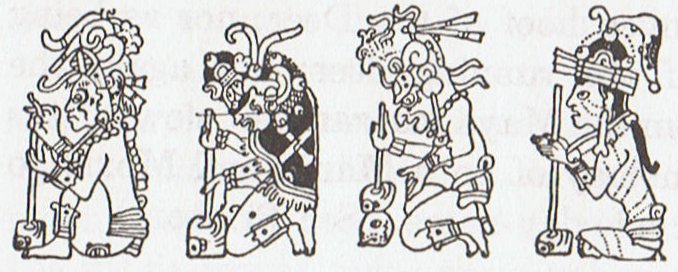 |
 |
 |
 |
 |
|
Bb8-22 |
Bb8-23 |
Bb8-24 (335 - 27) |
Bb8-25 (309) |
|
koia kua oho ki te henua |
ko
korua ra ku pipiri |
kua
noho ki te ariki - i te
henua
koti hia |
kua
amo ko te henua |
|
Piri. 1. To join
(vi, vt); to meet someone on
the road; piriga,
meeting, gathering. 2. To
choke: he-piri te gao.
3. Ka-piri, ka piri,
exclamation: 'So many!'
Ka-piri, kapiri te pipi,
so many shellfish! Also used
to welcome visitors:
ka-piri, ka-piri! 4.
Ai-ka-piri ta'a me'e ma'a,
expression used to someone
from whom one hopes to
receive some news, like
saying 'let's hear what news
you bring'. 5. Kai piri,
kai piri, exclamation
expressing: 'such a thing
had never happened to me
before'. Kai piri, kai
piri, ia anirá i-piri-mai-ai
te me'e rakerake, such a
bad thing had never happened
to me before! Piripiri,
a slug found on the coast,
blackish, which secretes a
sticky liquid. Piriu,
a tattoo made on the back of
the hand. Vanaga. 1. With,
and. 2. A shock, blow. 3. To
stick close to, to apply
oneself, starch; pipiri,
to stick, glue, gum;
hakapiri, plaster, to
solder; hakapipiri,
to glue, to gum, to coat, to
fasten with a seal;
hakapipirihaga, glue. 4.
To frequent, to join, to
meet, to interview, to
contribute, to unite, to be
associated, neighboring;
piri mai, to come, to
assemble, a company, in a
body, two together, in mass,
indistinctly; piri ohorua,
a couple; piri putuputu,
to frequent; piri mai
piri atu, sodomy;
piri iho, to be addicted
to; pipiri, to catch;
hakapiri, to join
together, aggregate, adjust,
apply, associate, equalize,
graft, vise, join, league,
patch, unite. Piria;
tagata piria,
traitor. Piriaro (piri
3 - aro), singlet,
undershirt. Pirihaga,
to ally, affinity, league.
Piripou (piri
3 - pou), trousers.
Piriukona, tattooing
on the hands. Churchill.
Koti.
Kotikoti. To cut with
scissors (since this is an
old word and scissors do not
seem to have existed, it
must mean something of the
kind). Vanaga. Kotikoti.
To tear; kokoti, to
cut, to chop, to hew, to
cleave, to assassinate, to
amputate, to scar, to notch,
to carve, to use a knife, to
cut off, to lop, to gash, to
mow, to saw; kokotiga
kore, indivisible;
kokotihaga, cutting,
gash furrow. P Pau.: koti,
to chop. Mgv.: kotikoti,
to cut, to cut into bands or
slices; kokoti, to
cut, to saw; akakotikoti,
a ray, a streak, a stripe,
to make bars. Mq.: koti,
oti, to cut, to
divide. Ta.: oóti, to
cut, to carve; otióti,
to cut fine. Churchill.
Amo.
To carry on one's shoulders:
O Yetú i-amo-ai te
tatauró ki ruga ki-te maúga
Kalvario. Jesus carried
his cross up to the Calvary.
Amoga, bundle; to tie
in a bundle: he-amoga i
te hukahuka, to tie a
bundle of wood. Vanaga. 1. A
yoke, to carry; amoga,
burden, load. 2. To bend,
to beat a path. Churchill.
Âmo. 1. To clean, to
clean oneself: he-âmo i
te umu, to clean the
earth oven; ka-âmo te
hare, ka haka-maitaki,
clean the house, make it
good; he-âmo i te ariga,
to clean one's face
wetting it with one's hand.
2. Clear; ku-âmo-á te
ragi, the sky is clear.
3. To slip, to slide, to
glide (see pei-âmo).
Ámoámo, to lick up,
to lap up, to dry; to slap
one's body dry (after
swimming or bathing):
he-âmoâmo i te vaihai rima.
Vanaga. Amoamo.
1. To feed, to graze. 2. To
spread, to stretch (used of
keete). Churchill. |
|
Nov 29 |
30 |
Dec 1 |
2 (336
→
4 * 84) |
|
RIGHT ASCENSION DAYS AT THE
FULL MOON: |
|
TABIT =
π³
Orionis
(71.7),
π²
Orionis (71.9) |
π4
Orionis (72.1),
ο¹
Orionis (72.4),
π5
Orionis (72.8)
*31.0 = *72.4 - *41.4 |
π¹
Orionis (73.0),
ο²
Orionis (73.4),
HASSALEH =
ι
Aurigae
(73.6),
π6
Orionis (73.9)
*32.0 = *73.4 - *41.4 |
ALMAAZ = ε Aurigae
(74.7),
HAEDUS I = ζ Aurigae
(74.8) |
|
May 31 |
June 1 (152) |
2 |
3 |
|
'May 4 |
5 (125 → 5 * 5 * 5) |
6 |
7 |
|
"April 20 |
21 (111) |
22 |
23 |
|
MARCH 28 |
29 (88) |
30 |
31 |
 |
 |
 |
 |
 |
 |
 |
|
Bb8-26 (310) |
Bb8-27 (366 * 2) |
Bb8-28 (733) |
Bb8-29 |
Bb8-30 (314) |
Bb8-31 |
Bb8-32
(→ 256) |
|
kua ka ko te Raa |
i vai te taketake |
ku kotia ko te henua |
kua haaati
hia ko te kava |
kava vere ki te henua |
kua haaati
hia ko te kava
- ma te hatu huri |
eko te henua |
|
Take.
The Marquesans are the only people who
own to a distinctive national name, and
retain a tradition of the road they
travelled from their original habitat, until
they arrived at the Marquesan Islands. They
call themselves te Take, 'the
Take nation'. Fornander. Take,
Tuvaluan for the Black Noddy (Anous
Minutes). The specific epithet
taketake is Māori for long established,
ancient, or original. In the Rapa Nui
mythology, the deity Make-make was
the chief god of the birdman cult, the other
three gods associated with it being
Hawa-tuu-take-take (the Chief of the
eggs) his wife Vie Hoa and Vie
Kanatea. Wikipedia. |
|
Dec 3 (310 + 27) |
4 |
5 |
6 |
7 (341) |
8 (364 - 22) |
9 (7 * 7 * 7) |
|
RIGHT
ASCENSION DAYS AT THE FULL MOON: |
|
HAEDUS II = η Aurigae
(75.9) |
5h (*76.1)
ε
Leporis (76.0),
CURSA (Footstool) = β Eridani (76.4),
λ Eridani (76.7)
*35.0 = *76.4 - *41.4 |
μ Aurigae, μ Leporis (77.6) |
ĸ Leporis (78.0),
RIGEL (Foot) =
β
Orionis
(78.1),
Flaming Star = IC405
(78.2),
CAPELLA = α Aurigae (78.4),
ο
Columbae,
τ
Orionis (78.8)
*37.0 = *78.4 - *41.4
THUBAN (α Draconis) |
λ Aurigae (79.0), λ Leporis (79.6), ρ
Aurigae (79.7)
ARCTURUS (α Bootis) |
Shur-narkabti-sha-iltanu-5 (Star in the Bull
towards the north)
σ
Aurigae (80.4), BELLATRIX (Female Warrior) =
γ
Orionis, SAIF AL JABBAR (Sword of the Giant)
=
η
Orionis
(80.7),
ELNATH (The Butting One) =
β
Tauri =
γ
Aurigae
(80.9)
*39.0 = *80.4 - *41.4 |
ψ
Orionis (81.1),
NIHAL (Thirst-slaking Camels) =
β
Leporis
(81.7) |
 |
|
June 4 (155) |
5 |
6 |
7 (157
+ 1) |
8 (181
- 22) |
9
(160) |
10 / 6 |
|
'May 8
(128) |
9 |
10 |
11 (131) |
12 |
13 |
14 |
|
"April
24 (114) |
25 |
26 |
27 |
28 |
29 |
30 |
|
APRIL
1 (91) |
2 |
3 |
4 |
5 |
6 |
7 |
... 7 is the mystic number of the
earth's surface ...
7 * 7 * 7 - 16 * 16 = 256 = 87:
 |
 |
|
Bb8-33 |
Bb8-34 (318) |
|
ko te
rima kua hakamata ia ki
te kupega |
e
tagata oo - ki te purega
e |
|
Kupega. He-tá i te
kupega, to weave (a
net). Hopu kupega,
those who help the
motuha o te hopu kupega
in handling the fishing
nets. Huki kupega,
pole attached to the
poop from which the
fishing-net is
suspended. Mata
kupega, mesh. Te
matu'a o te kupega,
part of a net from which
the weaving started.
Te puapua kupega,
the upper part of a
fishing net. Tau
kupega, rope from
which is hung the oval
net used in ature
fishing. Tuku kupega,
a fishing technique:
two men drag along the
top of a fishing net
doubled up, spread out
on the bottom of a small
cove, trapping the fish
into the net. Vanaga.
Pure. Cowrie
(Cypraea caput
draconis); pure
vaka, another type
of cowrie, which can
float on the sea like a
diminutive boat (vaka).
Vanaga. 1. To pray, to
supplicate, invocation,
prayer; hare pure,
church, chapel; tae
pure, irreverence;
purega, prayer P
Pau., Mgv., Mq., Ta.:
pure, to pray. In
Samoa, Tonga, Niuē,
Futuna, Uvea,
pule
means to command.
2. A shell T. P Pau.:
hakapurepure, to
dye, to color. Mq.:
pué, the porcelain
shell. Ta.: pure,
a mark. Purepure,
spotted, dappled;
ragi purepure,
dappled sky.
Purepurea, spotted.
P Pau.: hakapurepure,
to dye, to color. Mgv.:
purepure, printed
cloth; akapurepure,
to paint in different
colors. Mq.: puépué,
covered with pale scars.
Ta.: purepure,
spotted, dappled.
Churchill.
Pureva,
rock, stone (small
enough to be thrown by
hand). Vanaga.
Pureva, to
throw a stone. Ta.:
Pureva, to
be on the eve of going.
Ha.:
puleva, to
float here and there.
Churchill. Pau.:
Pure-hiva, a
butterfly. Mgv.:
pure-rehue, id. Ta.:
pure-hua, a moth.
Mq.: pure-hua,
id. Ma.: pure-hua,
id. Churchill. |
|
Dec 10 (*81 + 183 =
*264) |
11
(345) |
|
RIGHT ASCENSION DAYS AT
THE FULL MOON: |
|
KHUFU
MINTAKA (Belt) = δ
Orionis,
υ Orionis (82.4),
χ Aurigae (82.5), ε
Columbae (82.6)
*41.0 = *82.4 - *41.4
→ 41 Arietis (Bharani) |
KHAFRE
Al
Hak'ah-3 (Brand)
/
Mrigashīrsha-5 (Stag's
Head)
/
Turtle Head-20 (Monkey)
/
Mas-tab-ba-tur-tur
(Little Twins)
ARNEB =
α
Leporis, CRAB NEBULA =
M1 Tauri
(83.0,
φ¹
Orionis (83.1),
HEKA =
λ
Orionis,
ORION NEBULA = M42
(83.2),
φ²
Orionis (83.6),
ALNILAM (String of
Pearls) =
ε
Orionis
(83.7) |
 |
 |
|
Bb8-35 (740) |
Bb8-36 (320) |
|
kua
vere koia ki te ohoga |
o te
vae |
|
MENKAURE
Three Stars-21 (Gibbon)
/
Shur-narkabti-sha-shūtū-6
(Star in the Bull
towards the south)
/
ANA-IVA-9 (Pillar of
exit)
HEAVENLY GATE =
ζ
Tauri,
ν
Columbae (84.0),
ω
Orionis (84.2),
ALNITAK (Girdle) =
ζ
Orionis,
PHAKT (Phaet) =
α
Columbae
(84.7) |
ο Aurigae (85.8), γ Leporis (85.9)
YANG MUN (α Lupi) |
|
... An oracle reached
him from the town of
Buto, which said
'six years only shalt
thou live upon this
earth, and in the
seventh thou shalt end
thy days'.
Mycerinus,
indignant, sent an angry
message to the oracle,
reproaching the god with
his injustice - 'My
father and uncle,' he
said 'though they shut
up the temples, took no
thought of the gods and
destroyed multitudes of
men, nevertheless
enjoyed a long life; I,
who am pious, am to die
soon!' There came in
reply a second message
from the oracle - 'for
this very reason is thy
life brought so quickly
to a close - thou hast
not done as it behoved
thee ... |
 |
 |
 |
|
Bb8-37 |
Bb8-38 |
Bb8-39 |
|
mai tae topa te Raa |
ki to ua |
ai ka topa te Raa |
|
μ Columbae (86.1),
Saiph (86.5), ζ μ
Columbae,
SAIPH (Sword) = κ
Orionis
(86.5), τ Aurigae, ζ
Leporis (86.6) |
υ Aurigae (87.1), ν
Aurigae (87.2),
WEZN (Weight) = β
Columbae,
δ Leporis (87.7),
TZE (Son) = λ
Columbae
(87.9) |
Ardra-6 (The Moist
One) /
ANA-VARU-8 (Pillar
to sit by)
χ¹
Orionis,
ξ
Aurigae (88.1),
BETELGEUZE =
α
Orionis
(88.3),
ξ
Columbae (88.5),
σ
Columbae (88.7)
ZUBEN ELGENUBI (α
Librae) |
|
Topa. 1.
To bend down, to
drop to the ground;
to fall on a certain
date. 2. To stop
doing something, to
drop; ina ekó
topa taau aga,
do not stop, keep
doing your work. 3.
To remain, to be
left over, to be
unfinished; he
topa te kai, the
food is not
finished, there is
some left. 4. To
come to one's
memory; i te aamu
he topa te vânaga
tûai, in the
legends old words
come to memory. 5.
To remember, to
reflect (with
mana'u as
subject); e-topa
rivariva tokorua
mana'u ki te me'e
nei, let the two
of you think
carefully about this
thing. Vanaga. 1.
Wine; topa tahaga,
id. 2. To fall in
drops, to descend,
to go down, to
abdicate; topa
iho, to fall;
hakatopa, to
knock down, to cause
to fall; hakatopa
ki raro, to
knock down, to
subjugate. 3.
Childbirth,
abortion; topa te
poki, to lie in.
4. A feast, to
feast. 5. To arrive,
to result; topa
rae, newcome;
topa iho, to
come unexpectedly;
topa ke, to
deviate; topa no
mai, topa
hakanaa, topa
tahaga, mau
topa pu,
unexpected; topa
okotahi,
solitary;
hakatotopa, to
excite, to foment.
6. Bad, low, cheap,
failure; igoa
topa, nickname;
ariga topa,
sinister, sly,
ill-tempered, to
hang the head;
hakatopa, to
disparage;
hakatotopa,
irresolute. 7. (Of
upward movement)
topa ki raro, to
scale, to surpass;
hakatopa ki te ao,
to confer a dignity;
hakatopa ki te
kahu, to spread
a sail;
hakatotopa, to
make a genealogy.
Churchill. |
 |
 |
 |
|
Bb8-40 (324) |
Bb8-41 |
Bb8-42 |
|
i
te hokohuki - ka hua
ia |
mai tae atu ki te
tagata - hupee
hia |
ka tuu i te toga |
|
η
Leporis (89.0),
PRAJA-PĀTI (Lord of
Created Beings) =
δ
Aurigae,
MENKALINAN (Shoulder
of the Rein-holder)
=
β
Aurigae, MAHASHIM
(Wrist) =
θ
Aurigae,
and
γ
Columbae (89.3),
π
Aurigae (89.4),
η
Columbae (89.7)
*48.0 = *89.4 -
*41.4 |
μ Orionis (90.3), χ²
Orionis (90.5) |
6h (91.3)
ν
Orionis (91.4),
θ
Columbae (91.5),
π
Columbae (91.6)
*50.0 = *91.4 -
*41.4 |
|
Hupee.
Mucus; hupeehupee,
asthma. T Pau., Ta.:
hupe, mucus.
Churchill. Ta.:
Hupe, mucus.
(Sa.: isupē,
id.) Ma.:
hupe,
id. Churchill.
Rhume, air
froide. Jaussen
according to
Barthel. |
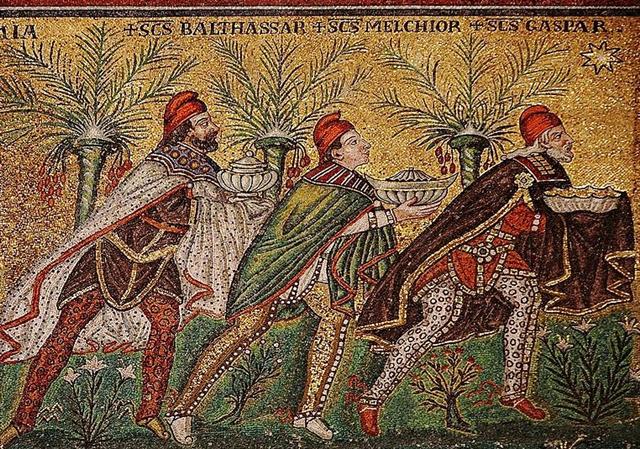
|
